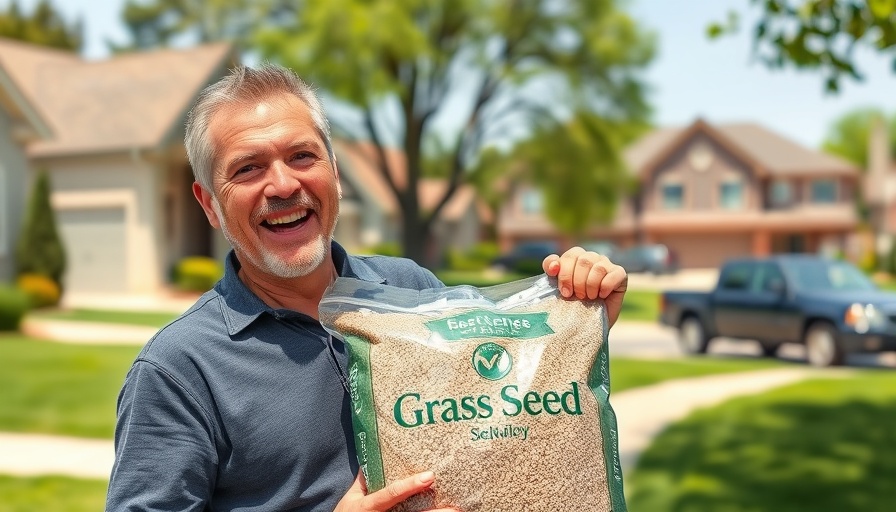
Growing Grass from Seed: The Ultimate Guide
For both new and established homeowners, achieving a lush lawn may seem daunting, but with the right methods, you can successfully cultivate grass from seed with confidence. Whether you’re a DIY enthusiast or a landscaping contractor in Charlotte looking to enhance your services, getting the basics right can lead to nearly 100% success. Here’s a detailed guide on how to grow grass from seed effectively, ensuring vibrant greenery that enhances curb appeal.
In How To Grow Grass From Seed Without Fail, the discussion dives into effective grass cultivation methods, exploring key insights that sparked deeper analysis on our end.
Preparing the Seedbed for Optimal Growth
The foundation of growing grass lies in meticulous preparation. Before you sow any seeds, it’s critical to create a suitable seedbed. First, clear the area of any debris, weeds, or existing grass. You should be able to see the soil clearly. Once the ground is exposed, ensure it’s level to provide an even surface for planting. For small patches in an already existing lawn, focus on scuffing up those localized areas.
Next comes hydration: never sow grass seed on dry dirt. Instead, pre-moisten the soil before planting to provide the necessary moisture for germination. A damp seedbed not only helps in seed adhesion but also mitigates the risk of wind dispersing your seeds. Consider using a thatch rake or an electric scarifier to fluff the soil, allowing seeds better contact with the earth.
Seed Selection and Proper Distribution
Understanding the type of grass you wish to cultivate is essential. Different types have varying seeding rates; for example, some require 1-2 pounds per 1,000 square feet, while others might need as much as 10 pounds. If you're unfamiliar with the specific grass variety you’re planting, it's advisable to consult resources or links that provide seed-to-area recommendations.
For even distribution, utilize a whirly-bird spreader, a push rotary spreader, or even a simple hand method if the area is small. Ensuring that seeds are spread uniformly across the soil will lead to a denser and healthier lawn. After spreading, it’s critical to give everything a light watering—enough to ensure that the seeds adhere but not so much that pooling occurs.
The Importance of Peat Moss in Seed Germination
One step that many homeowners overlook is the application of peat moss, which provides an essential layer of protection and moisture retention for seeds. When you cover the freshly sown seeds with peat moss, it equalizes moisture, encouraging uniform germination across the lawn. While this might seem like an additional expense—averaging around $40 for enough peat moss to cover roughly 750 square feet—it’s a valuable investment.
Applying peat with a spreader can save time, but for smaller areas, using your hands to sprinkle it directly over the seed is equally effective. It might get messy, but you can’t underestimate the impact that this step has on your lawn's eventual growth.
Watering Strategies for Successful Grass Establishment
Watering is an ongoing responsibility during the grass establishment phase. The first day post-seeding is crucial—consistent and adequate moisture is paramount for seed germination. Watering multiple times throughout the day will keep the seeds moist without overwhelming them with water. If you're only able to manage one watering session, ensure it occurs at dusk to maximize the chance that water will remain on the ground overnight for absorption.
Keep in mind that different grass types will respond to your initial efforts at varying rates. For instance, Kentucky Bluegrass can take up to 30 days to fill in adequately, while others, such as Annual Ryegrass, might be visible within only ten days. Recognizing these patterns can better inform your expectations and follow-up maintenance practices.
Adapting Practices for Local Conditions
As you embark on your grass-growing journey, consider local conditions that may influence growth patterns. For example, low maintenance landscaping ideas in Raleigh, NC, suggest selecting native plants that are well-tuned to your specific climate, supporting sustainability and biodiversity. Emphasizing local and native varieties not only boosts your lawn's health but also aligns your project with ecological landscaping principles.
Common Missteps: What to Avoid
Avoid the trap of over-watering; it’s crucial to maintain moisture without allowing standing water. In addition, neglecting to check soil quality before seeding can lead to poor growth outcomes. Ensure you’re using the right soil amendments and preparing the seedbed correctly.
Keeping informed on best practices in your area can bridge the gap between novice errors and a beautifully established lawn. Resources such as local gardening centers or professional landscaping services can offer tailored advice specific to your home environment.
Call to Action
If you’re keen to cultivate an attractive lawn that serves as a welcoming aspect of your home, implement these strategies with diligence. Explore resources on low maintenance flower beds with NC perennials or xeriscaping tips for NC gardens to enhance your landscaping project further.
 Add Row
Add Row  Add
Add 




Write A Comment